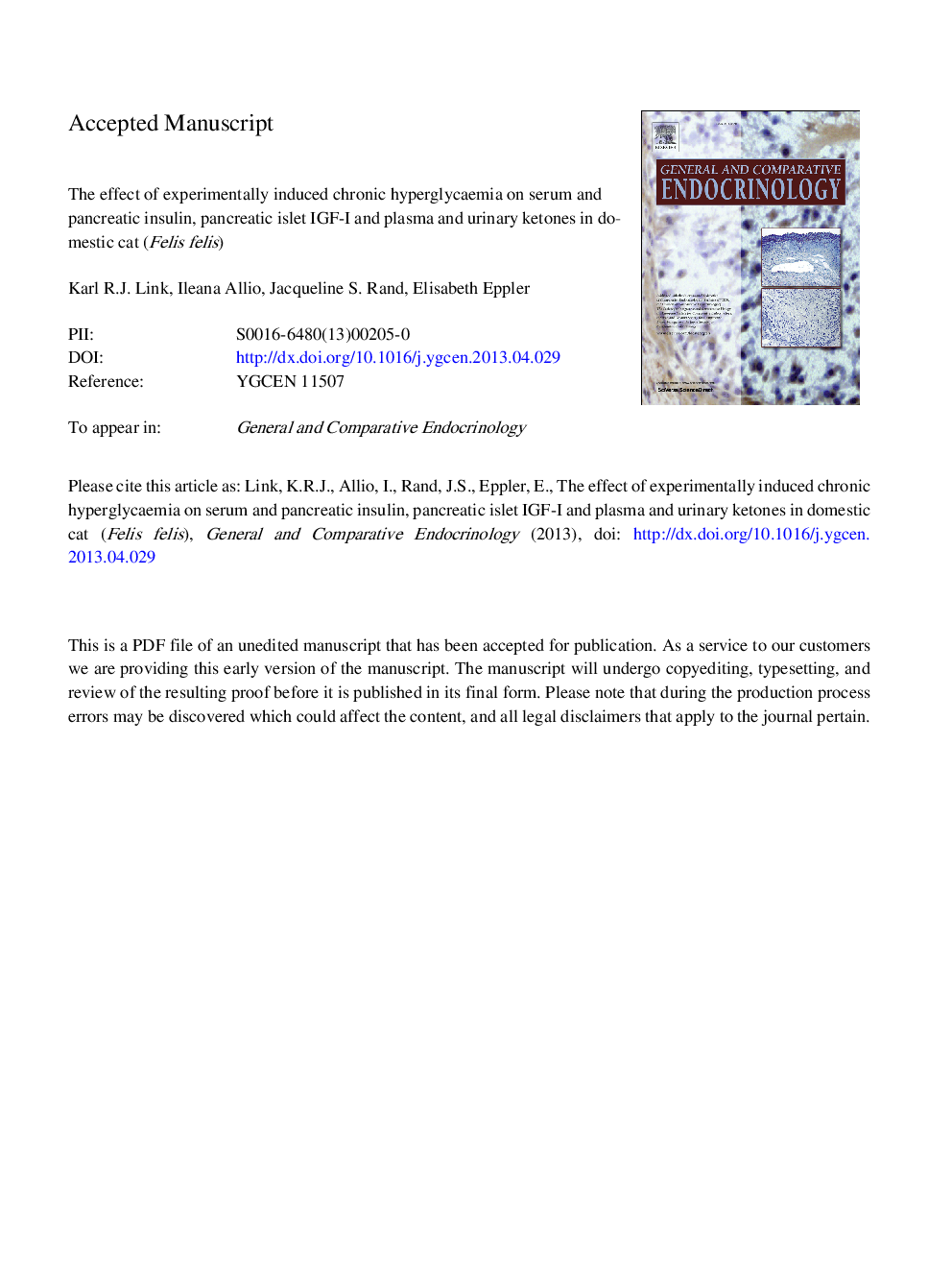| Article ID | Journal | Published Year | Pages | File Type |
|---|---|---|---|---|
| 5901393 | General and Comparative Endocrinology | 2013 | 46 Pages |
Abstract
Like in humans, diabetes mellitus is on the rise in cats. Feline diabetes is a suitable model for human type-2 diabetes. We investigated magnitude and timing of insulin suppression with induced hyperglycaemia and its relationship to plasma and urinary ketones and to pancreatic islet insulin. IGF-I is under discussion as a protective mechanism but little is known about its role in diabetes in general and its distinct localisation in feline pancreatic islets in particular. Thirteen healthy, adult cats were allocated to 2 groups and infused with glucose to maintain their blood glucose at a high or moderate concentration for 42 days resulting in insulin secretion suppression. After initial increase, insulin levels declined to baseline but were still detectable in the blood at a very low level after 6 weeks of glucose infusion and then increased after a 3 week recovery period. While IGF-I in healthy cats was primarily located in glucagon cells, in hyperglycaemia-challenge IGF-I was pronounced in the β-cells 3 weeks after ceasation of infusion. Six/8 cats developing glucose toxicity became ketonuric after 3-4 weeks. Gross lipaemia occurred approx 1 week prior to ketonuria. Ketonuric cats required 1-2 weeks of insulin therapy after-infusion until β-cell recovery. In conclusion, ketosis and hyperlipidaemia are likely to occur in diabetic cats with glucose at 30 mmol/L, especially after ⩾2 weeks. Three weeks after ceasation of infusions, clinical and morphological recovery occurred. We propose a local protective effect of IGF-I to support survival and insulin production in the hyperglycaemic state and recovery period.
Related Topics
Life Sciences
Biochemistry, Genetics and Molecular Biology
Endocrinology
Authors
Karl R.J. Link, Ileana Allio, Jacqueline S. Rand, Elisabeth Eppler,
